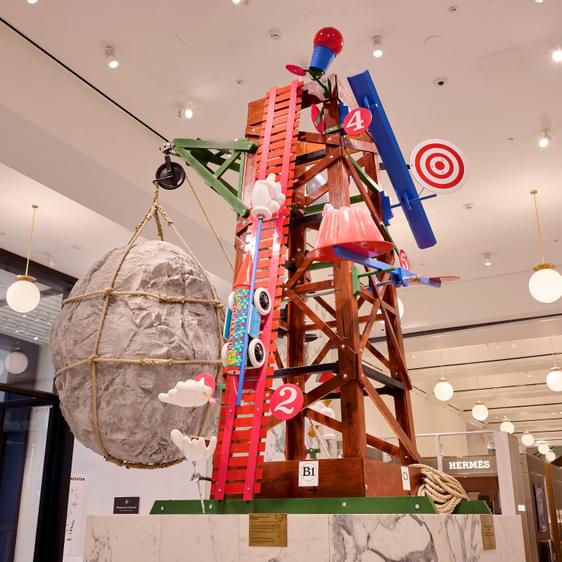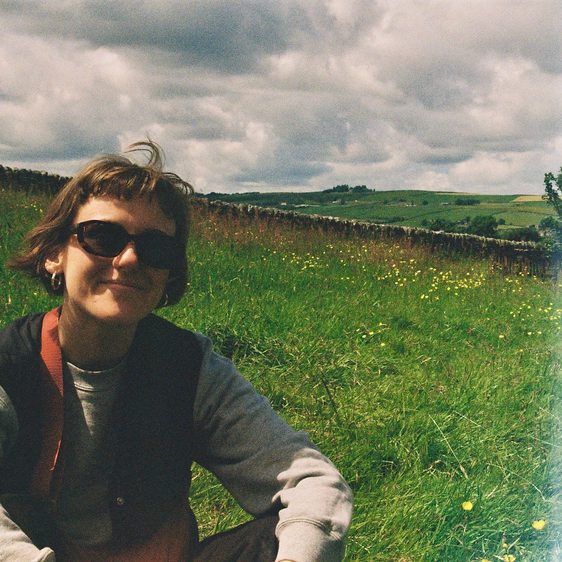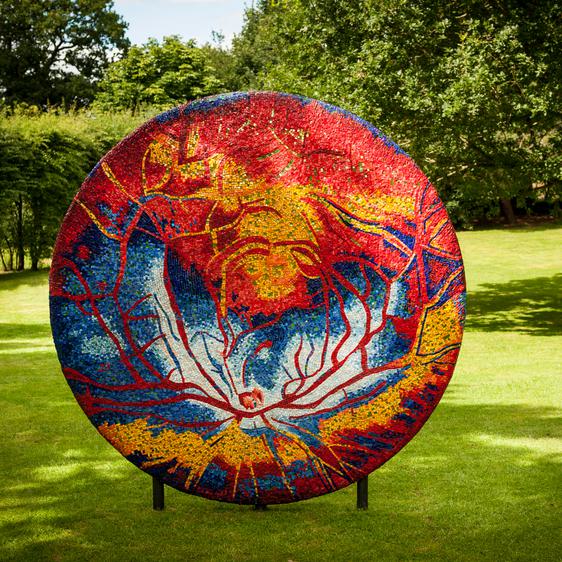
About Eduardo Paolozzi
Eduardo Paolozzi (1924–2005) was a central figure in British art from the post-war period and throughout the latter half of the 20th century. Responding to Surrealism and Dadaism, his innovative approach is widely viewed as a precursor to and driver of the British Pop Art movement.
Paolozzi first exhibited at YSP in the early 1980s and in 1994 the Park presented a major exhibition to mark his 70th birthday.

Acknowledged as a highly accomplished and inventive printmaker, this display includes graphic works taken from the series BUNK, Moonstrip Empire News and General Dynamic FUN, part of the YSP collection, gifted by the artist in 1994. These works stand as pictorial sourcebooks that reveal Paolozzi’s eclectic fascination with post-war popular culture through advertisements, films, toys, magazines, packaging and emerging technology.
Seen through the lens of the concurrent KAWS exhibition and with a distance of over half a century between both artists, this display reveals a powerful artistic lineage while revealing ways in which our society has changed together with its evolving preoccupations. Both artists share a passion for toys, making art that is responsive to contemporary culture and reflecting an evolving cultural iconography.
…all human experience is just one big collage
- Eduardo Paolozzi, 1984
You might also like
More- News

YSP's latest Selfridges collaboration with artist Mel Brimfield
4 April 2024 - News

Staff Profile: Laura Keene, Programme Assistant at YSP
14 October 2025 - Art Outdoors

Marialuisa Tadei: Night and Day
Tadei’s works commonly explore mystical and spiritual views inspired by anatomy and nature, and uses geometric forms, such as circles, to symbolise eternity. The two-sided mosaic Night and Day (Incarnazione) is an extension of the artist’s Oculus Dei series (1998-2008), colourful and abstract disks made of glass and marble that can be interpreted as the details in human eyes. - Art Outdoors

David Nash: Seventy-one Steps
71 oak slabs were charred and oiled on site before installing, and were placed to work with the lie of the land. The steps are completed by 30 tonnes of coal surrounding the steps, creating a stunning installation that will erode and change over time.


